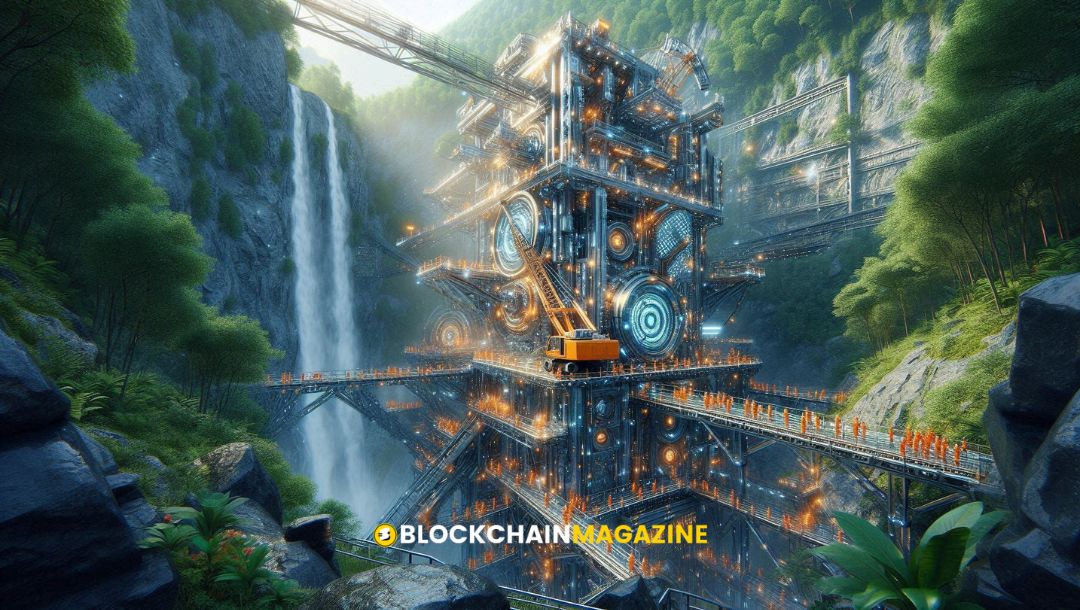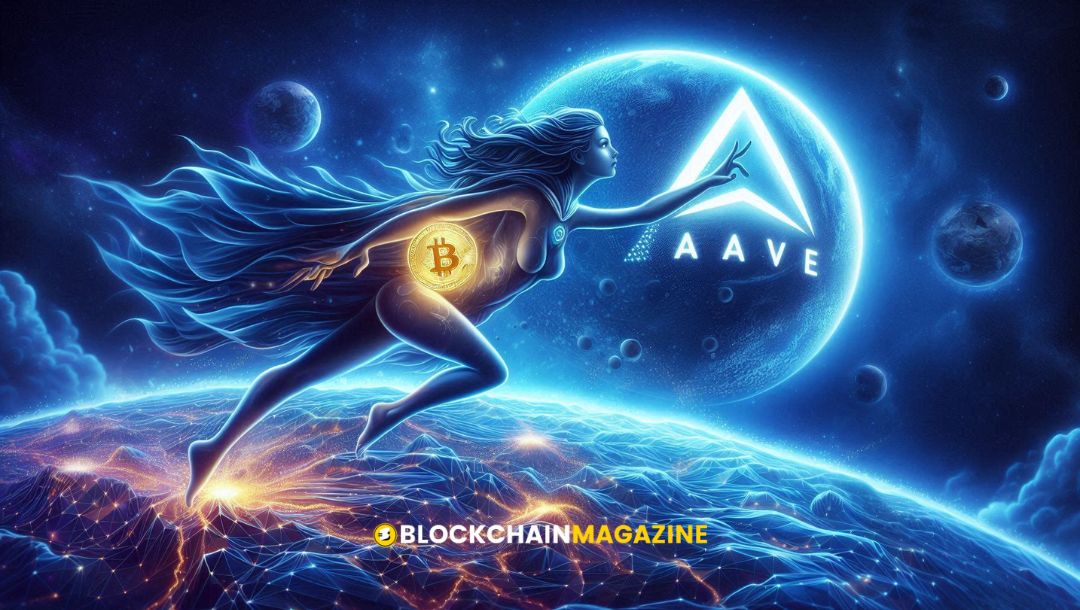The Best Crypto for Mining: Top Picks for 2023
Cryptocurrency mining continues to be a lucrative endeavor in 2023, with numerous digital currencies offering promising returns. Whether you’re a seasoned miner or just getting started, choosing the right cryptocurrency to mine is crucial for maximizing your profits. In this guide, we’ve picked out the top 10 cryptocurrencies to mine this year, based on their profitability, ease of use, and potential for future growth.
Key Takeaways
- Bitcoin remains a top choice for miners due to its high market value and widespread adoption.
- Ethereum continues to be a strong contender, especially with its transition to Ethereum 2.0.
- Monero is favored for its privacy features and CPU mining capabilities.
- Ravencoin is popular among hobbyists for its community-driven development and ASIC resistance.
- Conflux offers scalable GPU mining, making it an attractive option for those with powerful hardware.
1. Bitcoin
Bitcoin is the pioneering cryptocurrency and is still the go-to choice for many experts today. Created in 2009 by Satoshi Nakamoto, Bitcoin (BTC) is the original cryptocurrency. It has a market cap of over $400 billion and is seen as a store of value and digital gold by many investors. The coin is also used for payments, remittances, and more. The Bitcoin blockchain remains secure and decentralized despite its large size and numerous forks.
Bitcoin was the first, and remains, the cornerstone for the entire crypto industry. It was a true technological revolution and financial evolution, with many leading thinkers of our time declaring it as the most impactful invention of the past 30 years. Bitcoin isn’t going away anytime soon.
Market Performance
| Metric | Value |
|---|---|
| All-time high | $69,045 |
| Market Cap | $445 Billion |
Security and Decentralization
Bitcoin runs on a blockchain, or a ledger logging transactions distributed across a network of thousands of computers. Because additions to the distributed ledgers must be verified by solving a cryptographic puzzle, a process called proof of work, Bitcoin is kept secure and safe from fraudsters.
Popularity
Bitcoin hardly needs an introduction as it’s often seen as the quintessential crypto investment. Despite some experts preferring coins with broader functionalities beyond a store of value or payment method, Bitcoin remains the most popular cryptocurrency in the world.
2. Ethereum
Ethereum ranks above Bitcoin for some, thanks to its innovative smart contract technology. It is the second-largest crypto by market cap and enables users to engage deeply with a plethora of decentralized applications and smart contracts, reducing bureaucracy and enhancing transaction efficiency.
Market Cap and Performance
- Market cap: $469.1 billion
- Year-over-year return: 105%
Key Features
- Smart Contracts: Automatically execute when conditions are met.
- Decentralized Applications (dApps): Engage deeply with various applications.
- Tokenized Assets: Supports a wide range of programming languages, making it easier for developers.
Importance in Blockchain
Ethereum is far ahead of any competition in the layer one smart contract space. It was the first cryptocurrency to support smart contract functionality and encourage blockchain-friendly development.
The entire discussion around Web3, decentralization, metaverses, and the next evolution of the internet where users own and control their own data, free of censorship and authoritarian control wouldn’t be possible without Ethereum.
Scalability Issues
Decentralization, security, and scalability — these 3 features (also called “the blockchain trilemma”) are not all accomplishable at the same time. For example, Ethereum can only effectively deploy two out of these three properties. That’s why it needs a little help with scalability from side projects.
3. Monero
Monero (XMR) is a popular choice among miners due to its unique cryptographic hash function, which makes it incompatible with application-specific integrated circuits (ASICs). This feature ensures that Monero can be mined using both GPUs and CPUs, making it accessible to a broader range of miners. Monero guarantees enhanced anonymity, making it difficult for third parties to trace transactions or link multiple operations together. This level of privacy is a significant draw for many crypto enthusiasts.
Key Features
Monero’s primary appeal lies in its privacy features. When you transfer funds, third parties cannot see the recipient’s address or the transaction amount. This makes Monero one of the most profitable cryptocurrencies to mine solo or with a GPU.
Mining Requirements
To mine Monero, you’ll need a computer with a decent GPU or CPU. The mining software is straightforward to set up, and you can start mining almost immediately. The network scales based on the number of users, not transactions, ensuring efficient operation.
Use Cases
Monero is ideal for organizations and private users who prioritize anonymity over transparency. Its wallet allows users to send and receive funds privately, avoiding custodians and middlemen. This makes Monero a versatile option for those looking to maintain privacy in their financial transactions.
Monero is often listed among the top 5 best platforms to track your crypto transactions. Its ease of use and functionality make it a favorite among both novice and experienced miners.
4. Ravencoin
Ravencoin is a standout in the world of cryptocurrency mining, particularly for those using GPUs. It takes only 1 minute to generate its block, making it significantly faster than Bitcoin, which takes 10 minutes. This efficiency makes Ravencoin an attractive option for miners looking to maximize their output.
Ravencoin was invented to simplify peer-to-peer transactions and operates as an open-source project on the Bitcoin codebase. This means it inherits some of the robust features of Bitcoin while offering unique advantages tailored for mining.
Mining Efficiency
Ravencoin’s quick block generation time of 1 minute is a key feature that sets it apart. This rapid validation process allows miners to achieve faster returns on their efforts compared to other cryptocurrencies.
Hardware Requirements
Unlike resource-intensive assets like Bitcoin, which require expensive ASICs, Ravencoin can be mined using GPUs. This makes it more accessible for hobbyist miners who may not have the budget for high-end mining hardware.
Community and Development
As an open-source project, Ravencoin benefits from a strong community of developers and enthusiasts. This collaborative environment fosters continuous improvement and innovation, ensuring that Ravencoin remains a competitive option in the mining landscape.
Ravencoin’s unique combination of quick block times and GPU compatibility makes it an excellent choice for both new and experienced miners.
Real-World Applications
Ravencoin is not just a mining-friendly cryptocurrency; it also has practical applications. It is designed to facilitate the transfer of real-world assets on the blockchain, bridging the gap between traditional finance and digital currencies. This makes it a versatile option for various use cases, from asset tokenization to secure transactions.
5. Conflux
Conflux is a high-performance public blockchain that aims to solve the blockchain trilemma by providing a secure, scalable, and decentralized network. It is designed to facilitate fast and efficient transactions while maintaining a high level of security.
Key Features
- High Throughput: Conflux can process a large number of transactions per second, making it suitable for various applications.
- Scalability: The network can scale efficiently without compromising on security or decentralization.
- Low Transaction Fees: Conflux offers low transaction fees, making it an attractive option for users and developers.
Use Cases
Conflux is used in various sectors, including finance, supply chain, and gaming. Its high throughput and low fees make it ideal for decentralized applications (dApps) and other blockchain-based solutions.
Future Prospects
The future of Conflux looks promising, with ongoing developments and partnerships aimed at enhancing its capabilities. According to a recent Conflux Network price prediction, the average price could reach $0.1941 by 2024.
Community and Support
Conflux has a strong community and is supported by various industry players. The network’s development is actively backed by a team of experienced professionals and researchers.
Conclusion
Conflux stands out as a promising blockchain network with its high throughput, scalability, and low transaction fees. Its future prospects and strong community support make it a noteworthy contender in the blockchain space.
6. Litecoin
Litecoin (LTC) is a peer-to-peer cryptocurrency that was created in 2011. It has a current market cap of over $7 billion and is one of the most popular digital coins in the world. Litecoin is known for its fast transaction speeds and low fees, which makes it an attractive option for everyday transactions. The asset also has strong fundamentals, with its development team actively working on improving the platform.
Adding Litecoin to your portfolio can greatly diversify your investments. Firstly, the asset is three times faster than Bitcoin, making it a great option for quick transactions. Secondly, its low fees make it an attractive option for everyday purchases. It recently surpassed Ethereum in terms of the total number of addresses. This indicates that more people are using the asset, which is a good sign for its future prospects.
Mining Algorithm
This asset relies on the same algorithm and source code as Bitcoin because it’s a hard fork of the latter. Unlike BTC, LTC can be mined with GPUs. It’s one of the top coins to mine according to their market cap.
Market Performance
- All-time high: $412.96
- Market cap: $7 Billion
Future Prospects
The asset’s value has been on a steady rise since its launch in 2017 and is expected to continue its growth in the coming years. Cardano is one of the best crypto to invest in now as it is expected to benefit from the increasing demand for blockchain-based applications.
7. Dogecoin
Dogecoin was famously started as a joke in 2013 but rapidly evolved into a prominent cryptocurrency thanks to a dedicated community and creative memes. Unlike many other cryptos, there is no limit on the number of Dogecoins that can be created, which leaves the currency susceptible to devaluation as supply increases.
Dogecoin’s price in 2017 was $0.0002. By May 2024, its price was at $0.16, up 82,334%.
Market Performance
- Market cap: $23.8 billion
- Year-over-year return: 125%
Mining Dogecoin
Dogecoin operates on the technological foundation of Litecoin and can be mined with GPUs. It’s one of the cheapest top altcoins to mine: the price of 1 DOGE is less than 0.1 USD.
There are many different ways to mine Dogecoin: pool mining, CPU mining, ASICs, and more. It is one of the easier coins to mine.
Community and Adoption
Dogecoin amassed a huge community and entered the rating of the top 20 cryptos, based on their market cap. The coin’s popularity is driven by its active community and widespread use in tipping and charitable donations.
8. Dash
Dash is a cryptocurrency that was created as an open-source version of the BTC blockchain. Individuals and businesses that mine it are called Masternodes. They are shareholders and they vote for the decisions that define the further development of the project. Dash is governed by a decentralized autonomous organization.
9. Zcash
Zcash (ZEC) is a standout in the cryptocurrency world, particularly for those who prioritize privacy. Even though this is another BTC fork, it differs drastically from its predecessor. While Bitcoin employs the PoW consensus, Zcash operates on its unique zk-SNARKs algorithm. This involves zero-knowledge proof and grants high anonymity to users.
Key Features
- zk-SNARKs Algorithm: This unique algorithm ensures that transactions are both secure and private.
- High Anonymity: Users can transact without revealing their identities.
- PoW Consensus: Like Bitcoin, Zcash uses Proof of Work, but with enhanced privacy features.
Mining Costs
| Type of Mining | Cost per Unit |
|---|---|
| ASIC Mining | $3 – $7 per ASIC |
| GPU Mining | $4 – $6 per GPU |
Why Choose Zcash?
Zcash is ideal for miners who value privacy and security. The rapid rise of this technology you can’t miss has made Zcash a popular choice among privacy-focused individuals and entities.
Zcash offers a unique blend of security and anonymity, making it a compelling option for miners in 2023.
10. Horizen
Horizen is renowned for being the best for GPU mining with zk-SNARKs. This makes it a top choice for miners looking to leverage advanced cryptographic techniques.
zk-SNARKs Technology
Horizen utilizes zk-SNARKs, a form of zero-knowledge proofs, which allows for secure and private transactions. This technology is a key feature that sets Horizen apart from other cryptocurrencies.
Mining Efficiency
The efficiency of mining Horizen is enhanced by its use of zk-SNARKs, making it a highly attractive option for GPU miners. The network’s design ensures that mining remains profitable and sustainable.
Community and Development
The Horizen community is active and continuously working on improvements. The development team is focused on making Horizen a “home for zk” and an enduring utility for $ZEN, ensuring its long-term viability and success.
Horizen’s commitment to zk-SNARKs technology and its active community make it a standout choice for GPU miners.
In the ever-evolving world of blockchain and cryptocurrency, staying informed is crucial. Dive deeper into the latest trends and insights with our comprehensive coverage. Don’t miss out on the stories that matter most. Visit our website today and stay ahead of the curve!
Conclusion
In conclusion, the landscape of cryptocurrency mining is ever-evolving, and making informed decisions is crucial for maximizing returns. Our guide has highlighted the top 12 cryptocurrencies to mine in 2023, each offering unique advantages in terms of mining rewards, ease of use, and potential for future growth. Whether you are a beginner or an experienced miner, these top picks provide a solid foundation for your mining endeavors. Remember, the key to successful mining lies in strategic choices, such as joining mining pools and staying updated with the latest trends and technologies. By carefully considering factors like profitability, network stability, and hardware requirements, you can navigate the complexities of crypto mining and make the most of your investment.
Frequently Asked Questions
What is the best cryptocurrency to mine in 2023?
The best cryptocurrency to mine in 2023 depends on various factors such as hardware, electricity costs, and mining goals. Some top picks include Bitcoin, Ethereum, Monero, and Ravencoin.
Is it profitable to mine Bitcoin in 2023?
Mining Bitcoin can still be profitable in 2023, but it requires significant investment in ASIC hardware and access to low-cost electricity. Joining a mining pool can also help increase profitability.
What hardware do I need to start mining cryptocurrencies?
The required hardware varies depending on the cryptocurrency. For Bitcoin, ASIC miners are essential. For Ethereum and other altcoins, high-performance GPUs are commonly used. Monero can be mined using CPUs.
Can I mine multiple cryptocurrencies at the same time?
Yes, you can mine multiple cryptocurrencies simultaneously using different hardware setups or by participating in mining pools that support multiple coins.
What are the risks associated with cryptocurrency mining?
Risks include high electricity costs, hardware wear and tear, market volatility affecting coin value, and regulatory changes that could impact mining operations.
Is joining a mining pool beneficial?
Joining a mining pool can be beneficial as it increases the chances of solving blocks and earning rewards, providing a steadier income stream compared to solo mining.
Stay informed with daily updates from Blockchain Magazine on Google News. Click here to follow us and mark as favorite: [Blockchain Magazine on Google News].
Get Blockchain Insights In Inbox
Stay ahead of the curve with expert analysis and market updates.
latest from tech
Disclaimer: Any post shared by a third-party agency are sponsored and Blockchain Magazine has no views on any such posts. The views and opinions expressed in this post are those of the clients and do not necessarily reflect the official policy or position of Blockchain Magazine. The information provided in this post is for informational purposes only and should not be considered as financial, investment, or professional advice. Blockchain Magazine does not endorse or promote any specific products, services, or companies mentioned in this posts. Readers are encouraged to conduct their own research and consult with a qualified professional before making any financial decisions. The featured image used is just a creative depiction of the title and it does not intend to hurt sentiments of any person or institution. If it hurts anyone sentiments, please do not hesitate to reach out to Blockchain Magazine.

 Bitcoin
Bitcoin  Ethereum
Ethereum  XRP
XRP  Tether
Tether  Solana
Solana  USDC
USDC  Dogecoin
Dogecoin  Cardano
Cardano  Lido Staked Ether
Lido Staked Ether  TRON
TRON  Wrapped Bitcoin
Wrapped Bitcoin  Wrapped stETH
Wrapped stETH  Chainlink
Chainlink  Avalanche
Avalanche  Sui
Sui  Stellar
Stellar  Litecoin
Litecoin  Toncoin
Toncoin  Shiba Inu
Shiba Inu  Hedera
Hedera  LEO Token
LEO Token  MANTRA
MANTRA  USDS
USDS  Hyperliquid
Hyperliquid  WETH
WETH  Polkadot
Polkadot  Bitcoin Cash
Bitcoin Cash  Bitget Token
Bitget Token  Ethena USDe
Ethena USDe  Wrapped eETH
Wrapped eETH  Uniswap
Uniswap  Monero
Monero  NEAR Protocol
NEAR Protocol  Pepe
Pepe  WhiteBIT Coin
WhiteBIT Coin  Aave
Aave  Bittensor
Bittensor  Ondo
Ondo  Aptos
Aptos  Internet Computer
Internet Computer  Dai
Dai  Official Trump
Official Trump  Ethereum Classic
Ethereum Classic  Mantle
Mantle  Tokenize Xchange
Tokenize Xchange  OKB
OKB  Gate
Gate  sUSDS
sUSDS  Coinbase Wrapped BTC
Coinbase Wrapped BTC 



